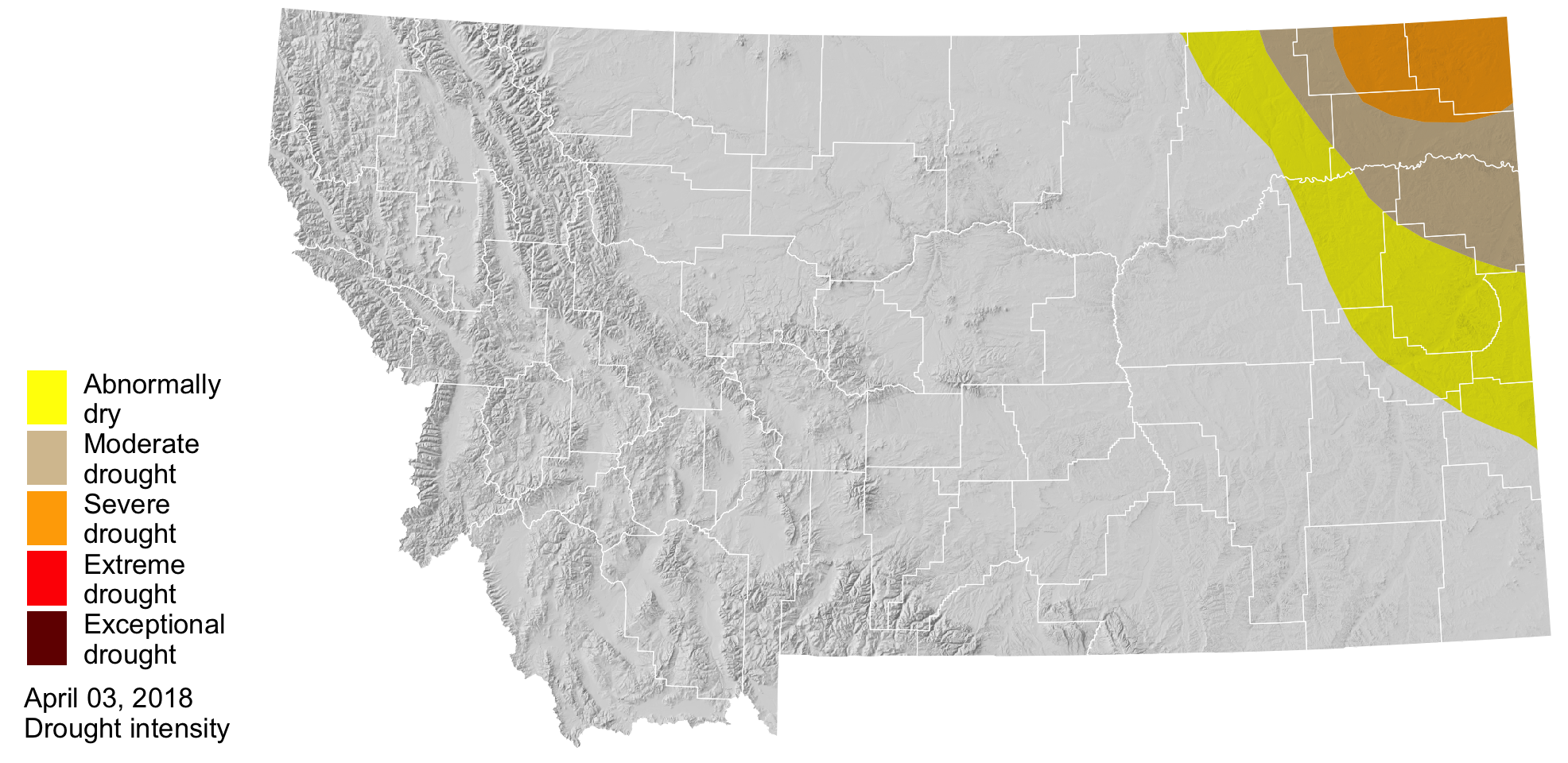January–March, 2018: Current conditions
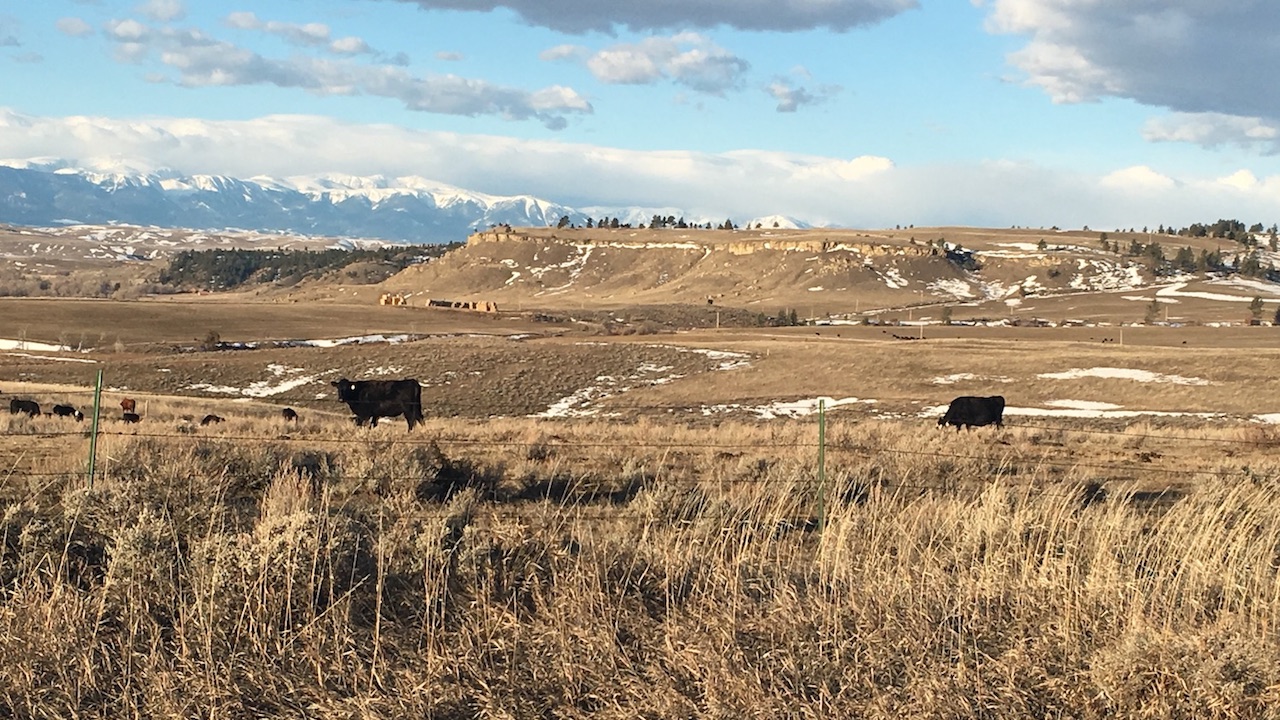
A cold and snowy winter was a challenge for some ranchers, especially in north-central Montana where February brought well over 200 percent of normal snowfall.
 Temperature
Temperature
La Niña conditions certainly didn’t disappoint in terms of this winter’s conditions. January–March temperatures were between 2 to 6 degrees below normal for central to eastern portions of the state. Western Montana experienced near normal temperatures except for isolated locations within mountain valley bottoms that were below normal. February was the 6th coolest on record since 1895 for the state as whole.
## [1] "vobjtovarid4: error #F: I could not find the requsted var (or dimvar) in the file!"
## [1] "var (or dimvar) name: crs"
## [1] "file name: /Users/bocinsky/Google Drive/UM/MCO/MT Drought & Climate/Newsletter Drafts/mtdrought/data/gridmet/precipitation_amount.nc"
## [1] "vobjtovarid4: error #F: I could not find the requsted var (or dimvar) in the file!"
## [1] "var (or dimvar) name: crs"
## [1] "file name: /Users/bocinsky/Google Drive/UM/MCO/MT Drought & Climate/Newsletter Drafts/mtdrought/data/gridmet/precipitation_amount.nc"
## [1] "vobjtovarid4: error #F: I could not find the requsted var (or dimvar) in the file!"
## [1] "var (or dimvar) name: crs"
## [1] "file name: /Users/bocinsky/Google Drive/UM/MCO/MT Drought & Climate/Newsletter Drafts/mtdrought/data/gridmet/daily_minimum_temperature.nc"
## [1] "vobjtovarid4: error #F: I could not find the requsted var (or dimvar) in the file!"
## [1] "var (or dimvar) name: crs"
## [1] "file name: /Users/bocinsky/Google Drive/UM/MCO/MT Drought & Climate/Newsletter Drafts/mtdrought/data/gridmet/daily_minimum_temperature.nc"
## [1] "vobjtovarid4: error #F: I could not find the requsted var (or dimvar) in the file!"
## [1] "var (or dimvar) name: crs"
## [1] "file name: /Users/bocinsky/Google Drive/UM/MCO/MT Drought & Climate/Newsletter Drafts/mtdrought/data/gridmet/daily_maximum_temperature.nc"
## [1] "vobjtovarid4: error #F: I could not find the requsted var (or dimvar) in the file!"
## [1] "var (or dimvar) name: crs"
## [1] "file name: /Users/bocinsky/Google Drive/UM/MCO/MT Drought & Climate/Newsletter Drafts/mtdrought/data/gridmet/daily_maximum_temperature.nc"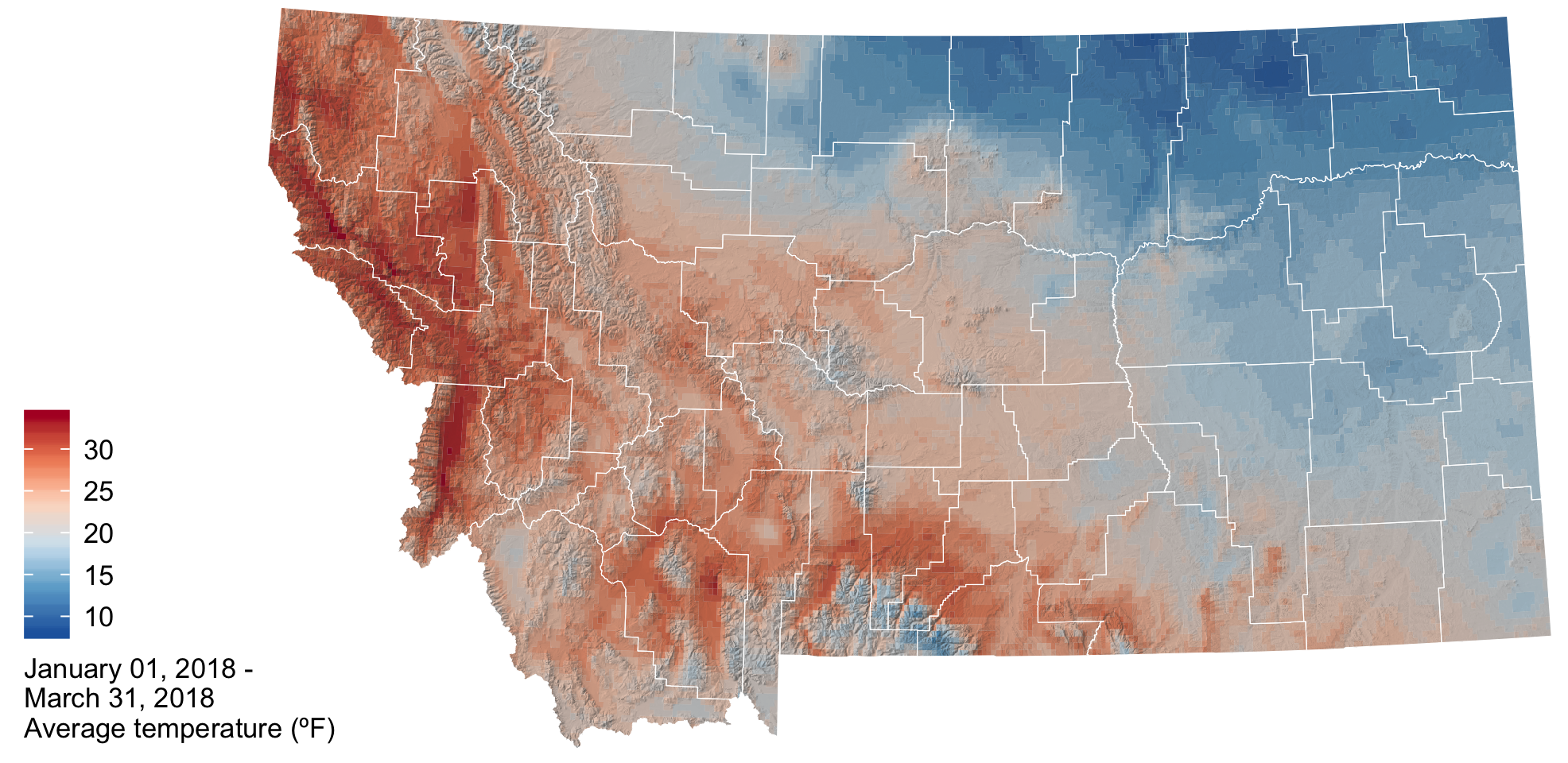
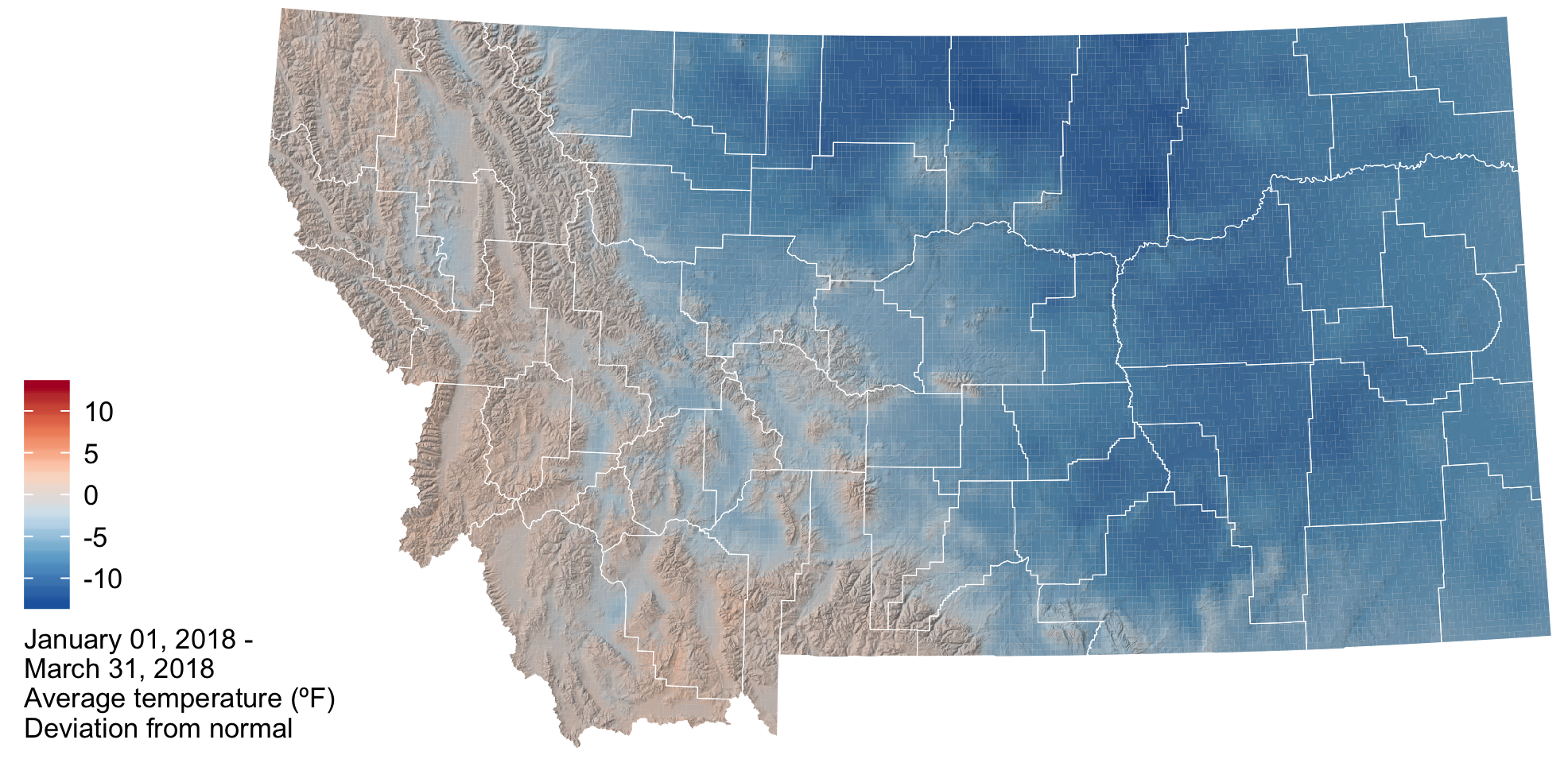
 Precipitation
Precipitation
Winter yielded wet conditions throughout the state from the mountains to the plains. This precipitation was much needed and helped to lessen the drought conditions that persisted in northeastern Montana since last summer. On the wet end of the spectrum, much of central and eastern portions of the state received from 150 to over 200 percent of normal precipitation. The mountainous region in western Montana received between 120 to 150 percent of normal precipitation. Above normal precipitation in February helped a lot; it was the fourth wettest February on record for the state. There was a pocket of normal to slightly below normal precipitation that occurred in Daniels, Sheridan, and Roosevelt counties, areas that also experienced some of the most severe drought conditions last summer.
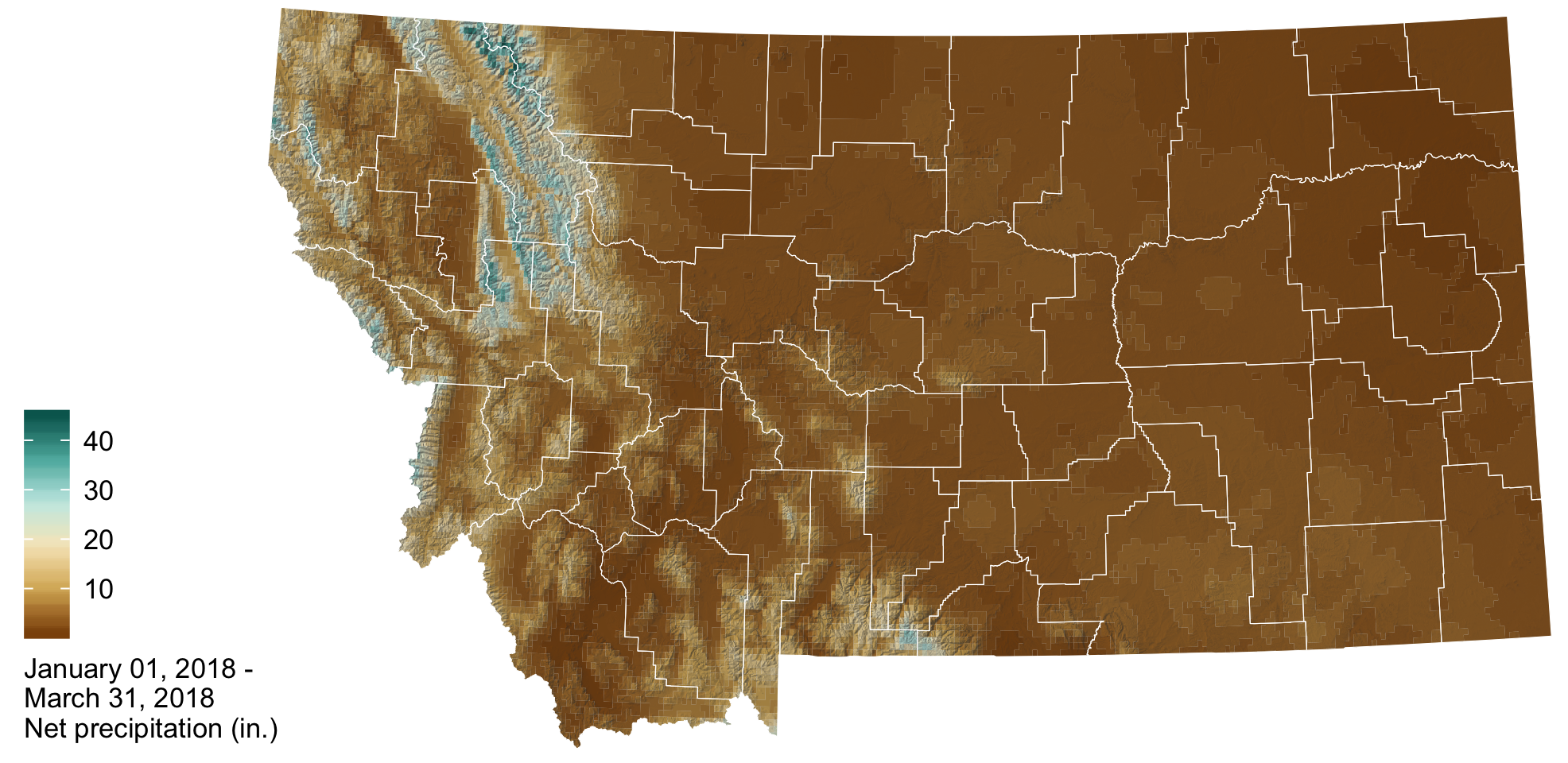
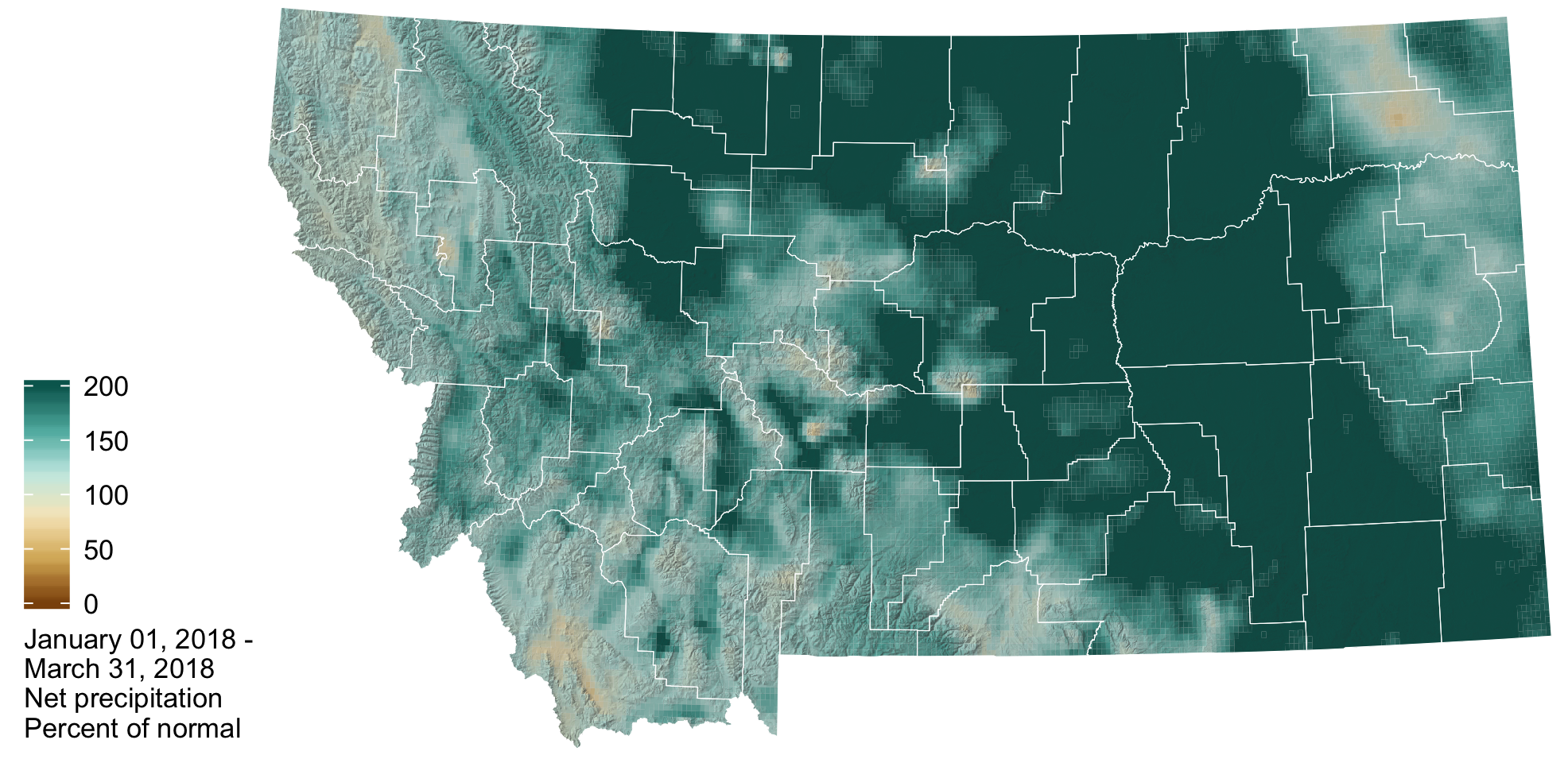
 Snowpack
Snowpack
Snowpack was well above normal going into April across Montana. Snow Water Equivalent (SWE) in the Upper Missouri River Basin above Fort Peck Reservoir and between Fort Peck and Garrison Reservoirs was 127% and 130%, respectively. Snowfall in central and eastern Montana increased the snowpack and covered the ground, which was bare at the end of January. The above normal snowpack will contribute to soil moisture recharge and good growing conditions this summer. However, it will be important to pay close attention to spring temperatures that impact the pace of snowmelt and potential for flooding.
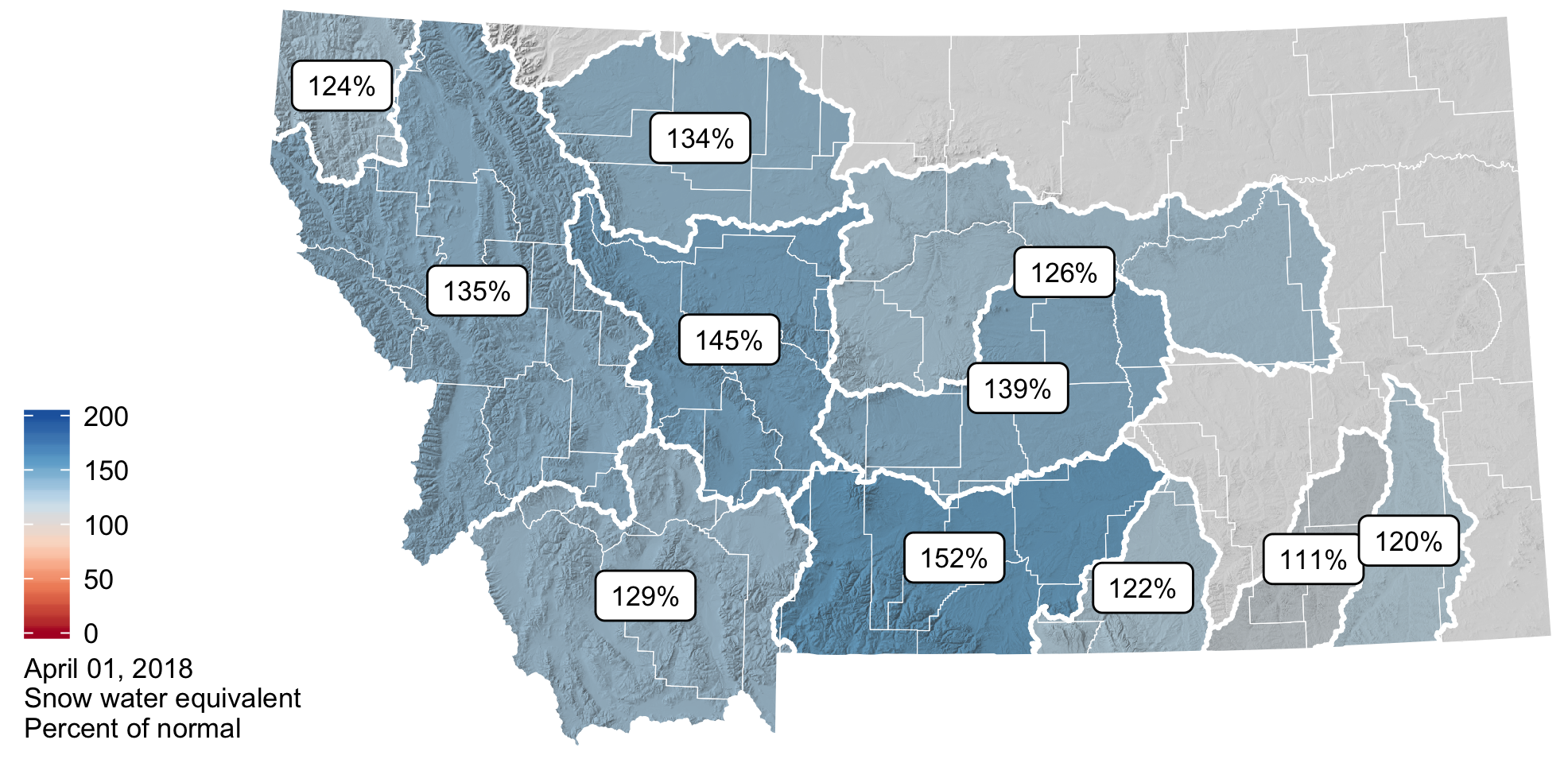
 Soil Moisture
Soil Moisture
Soil moisture is factored into forecasts as an indicator of wet or dry basin conditions and the potential for drought or flooding as we move into the spring. Pockets of northwestern and south-central Montana have soil moisture surpluses due to the high precipitation in the last couple of months. The majority of the state has near normal soil moisture saturation (50–60%) for this time of the year. These are likely to progress towards saturation (100%) as snowmelt and spring rains occur. Pockets of low soil moisture still exist in northeastern and southwestern Montana and are associated with last summer’s drought conditions and lower than normal precipitation in these areas.
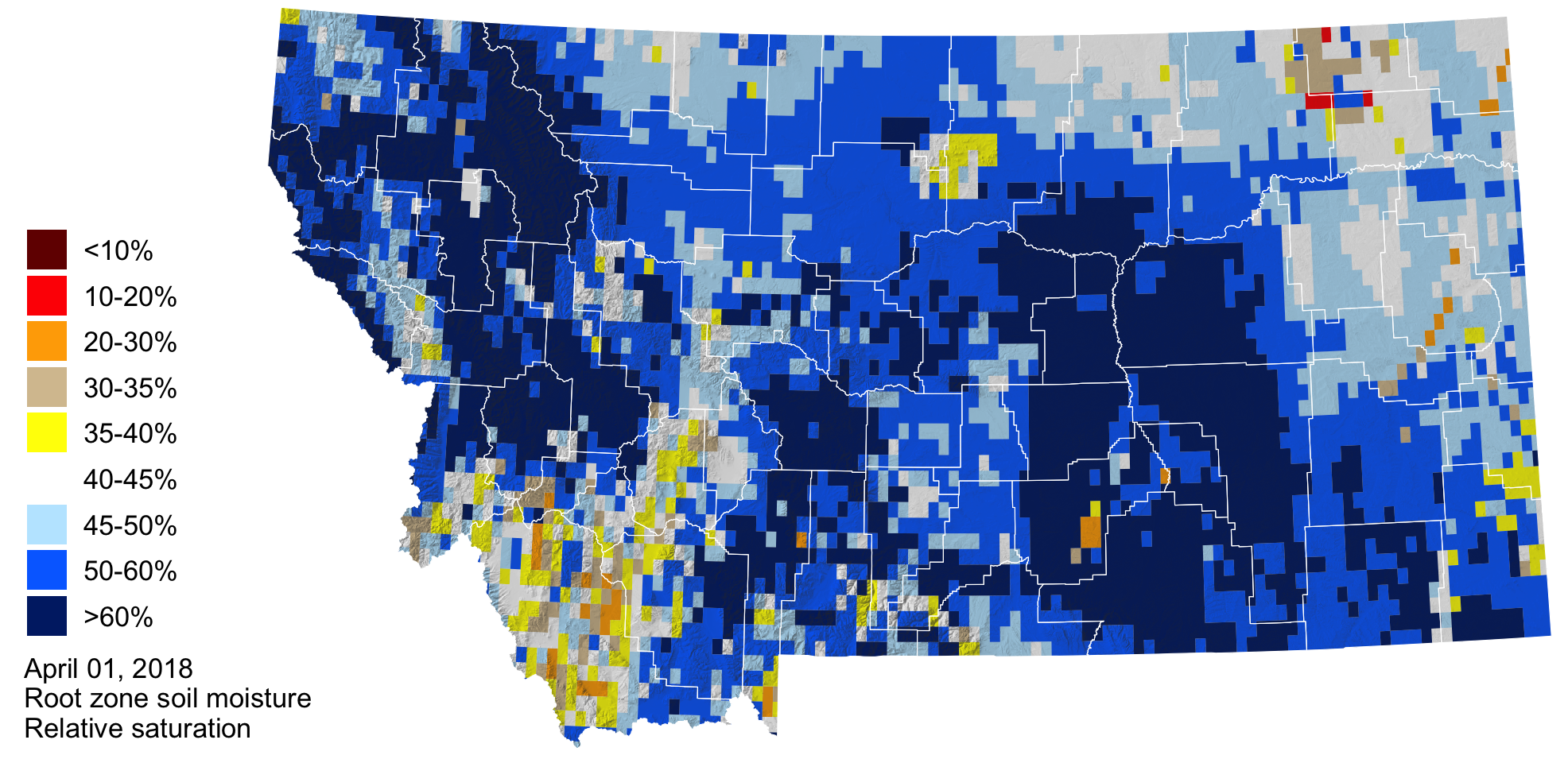
 Drought
Drought
With winter precipitation levels well above normal, the US Drought Monitor has removed drought conditions across most of the state. Northeastern Montana remains abnormally dry or under moderate drought conditions, with Daniels, Sheridan, and Roosevelt counties remaining under severe drought conditions.
